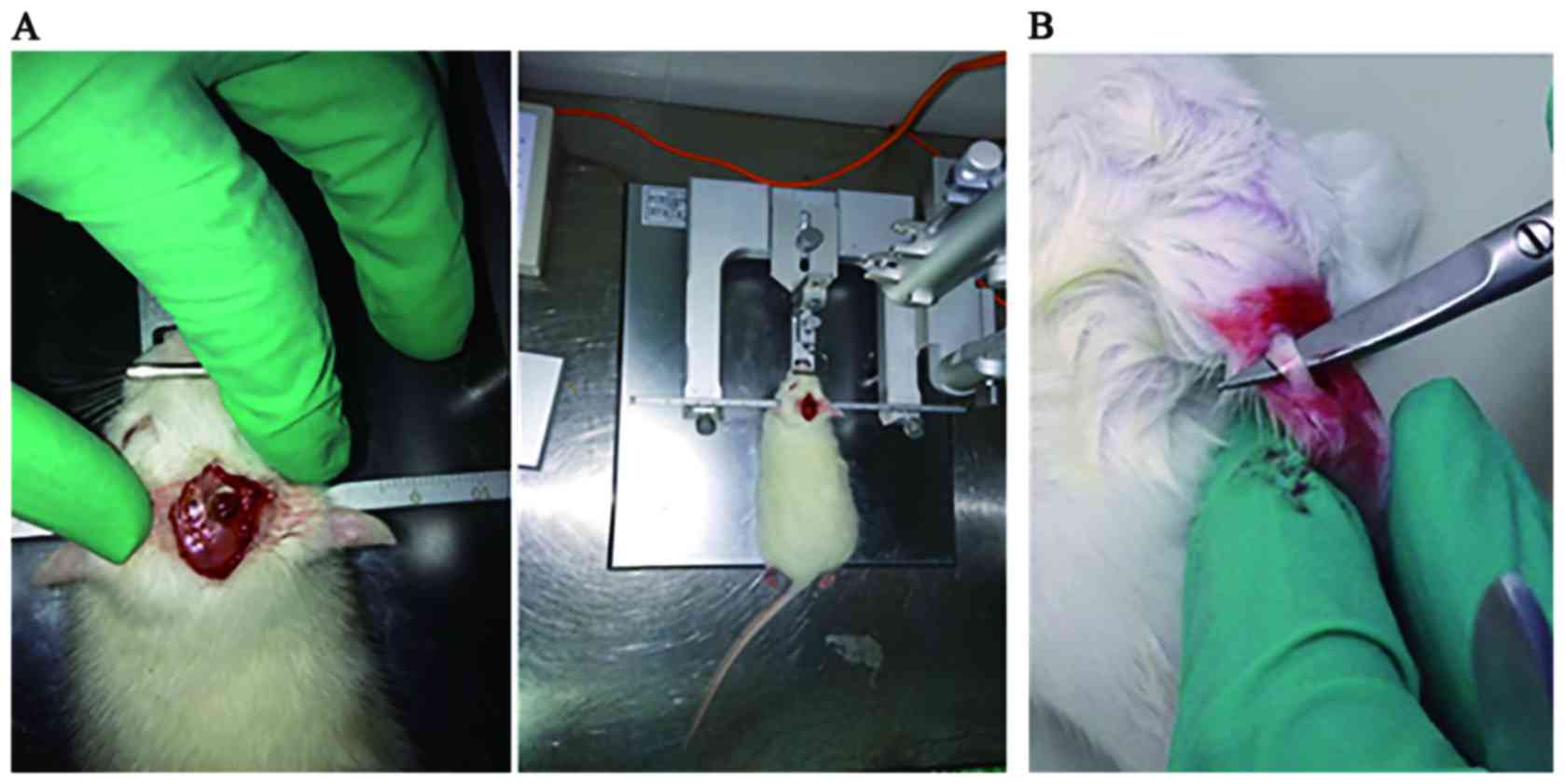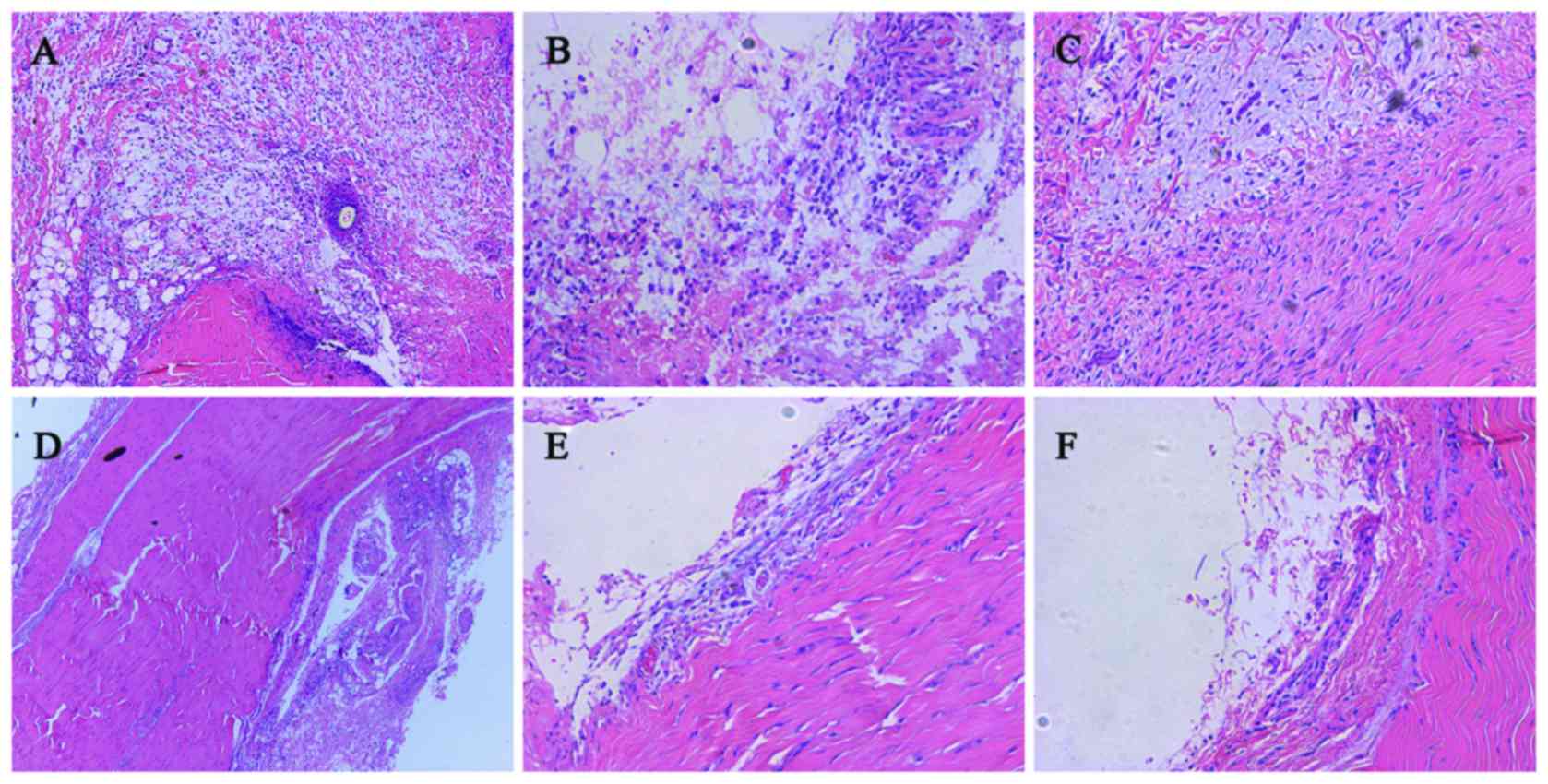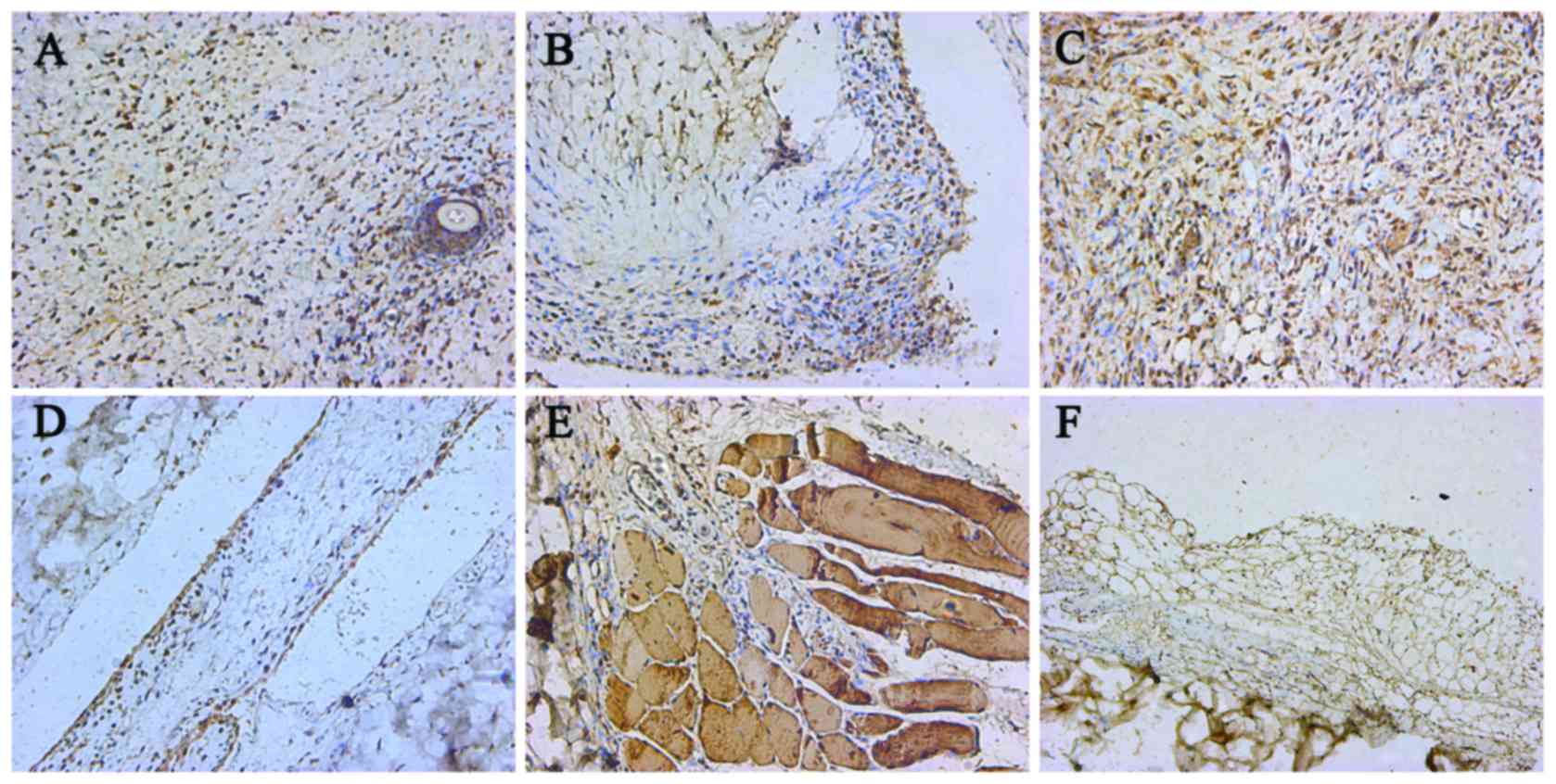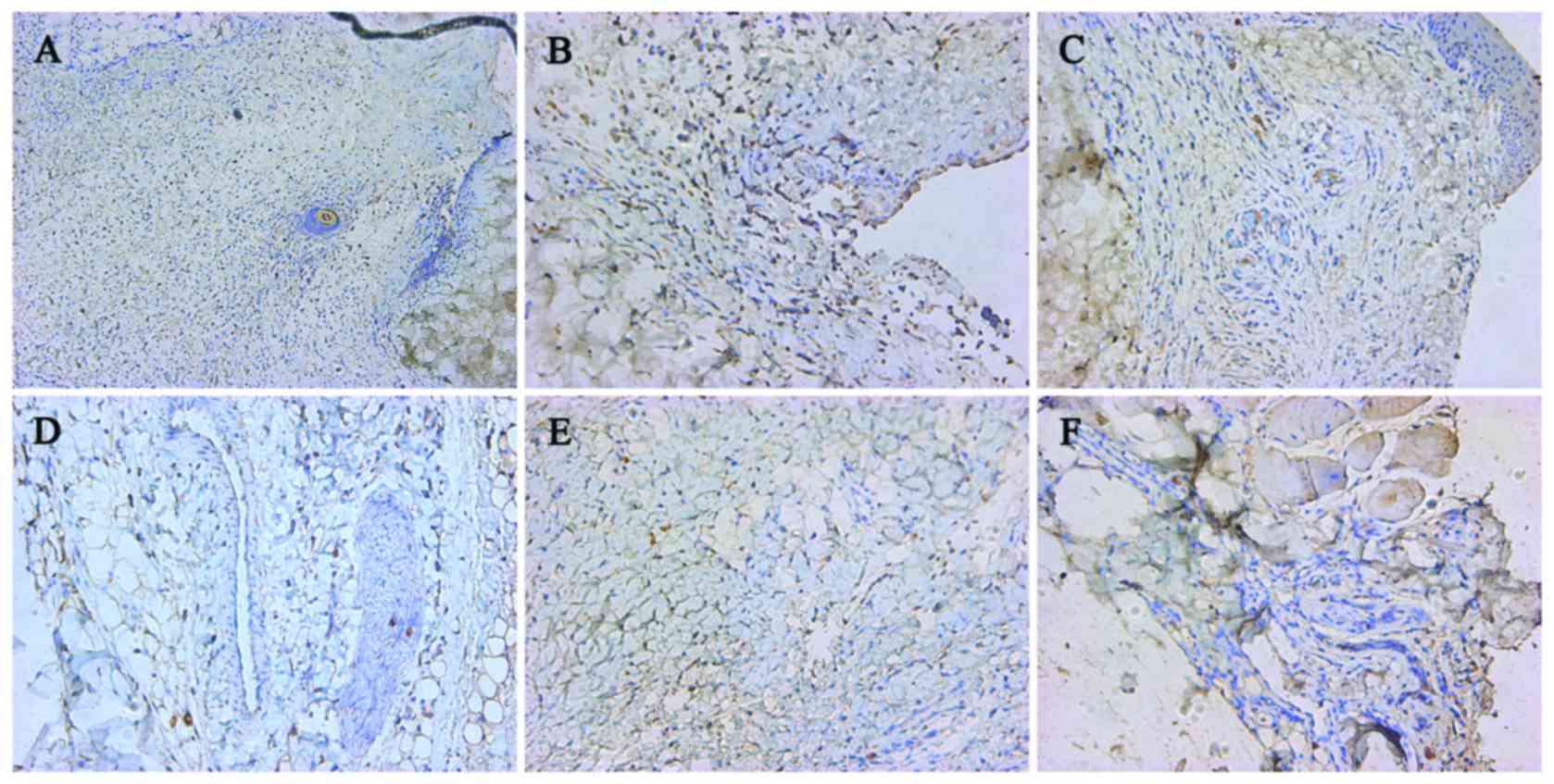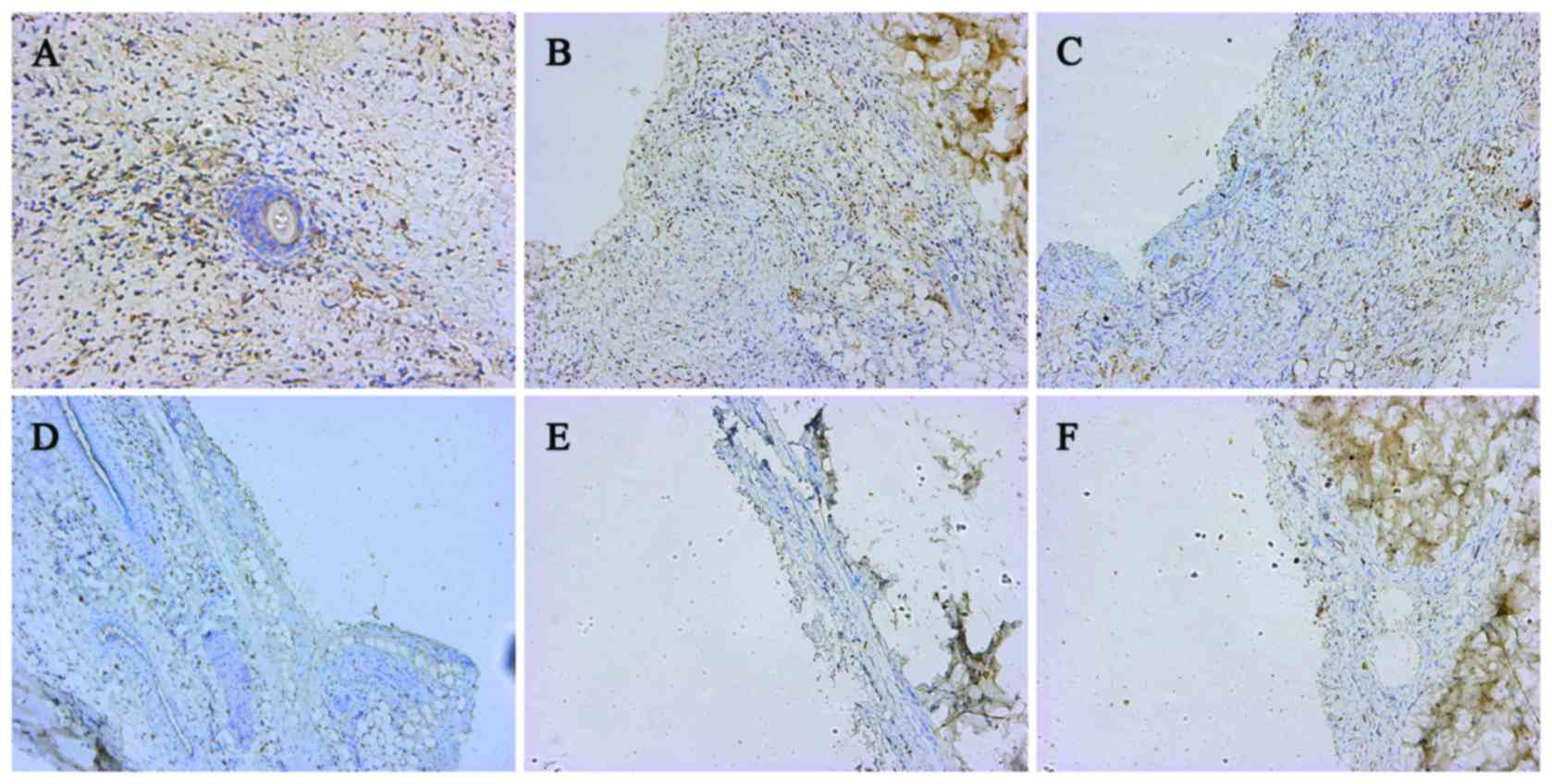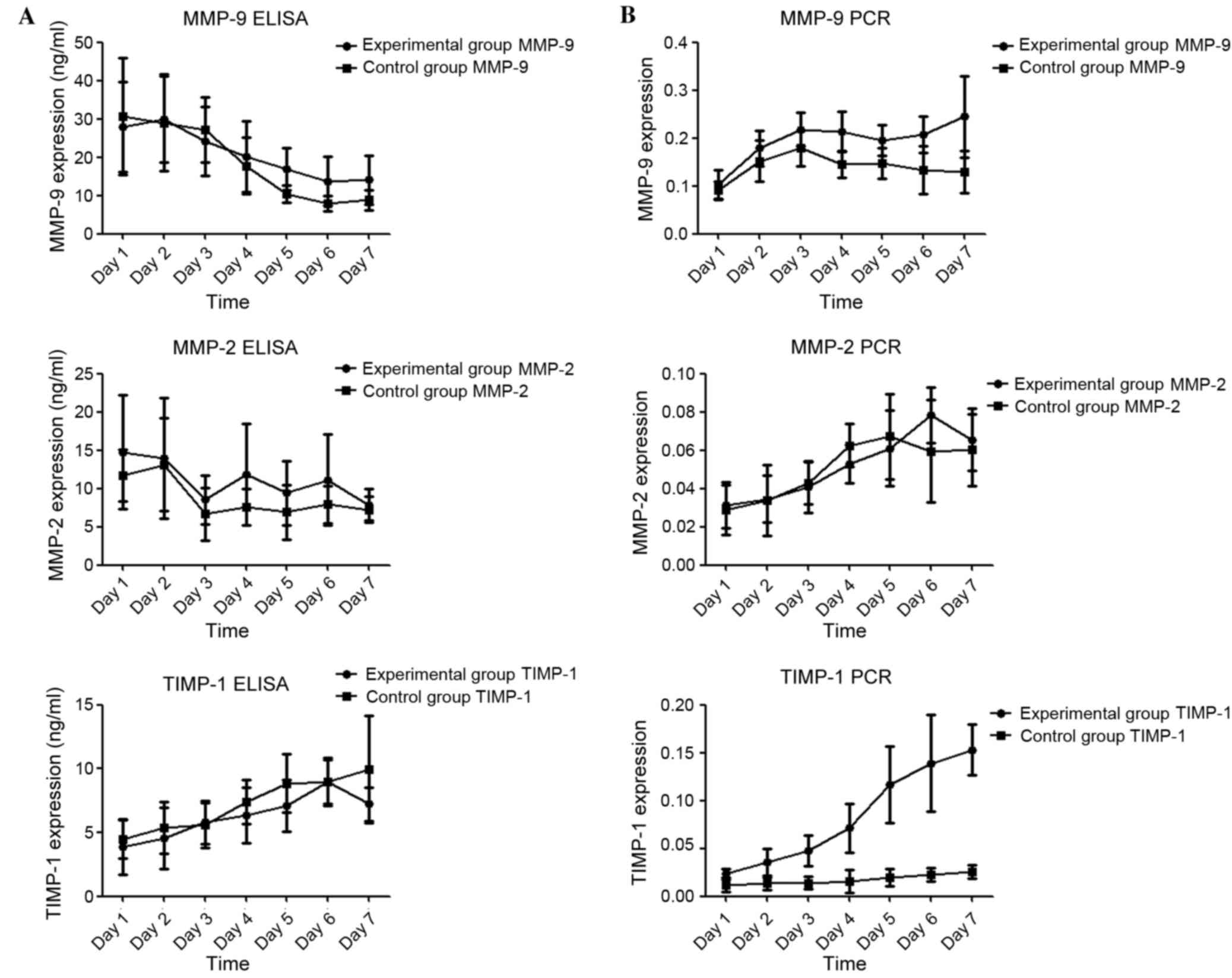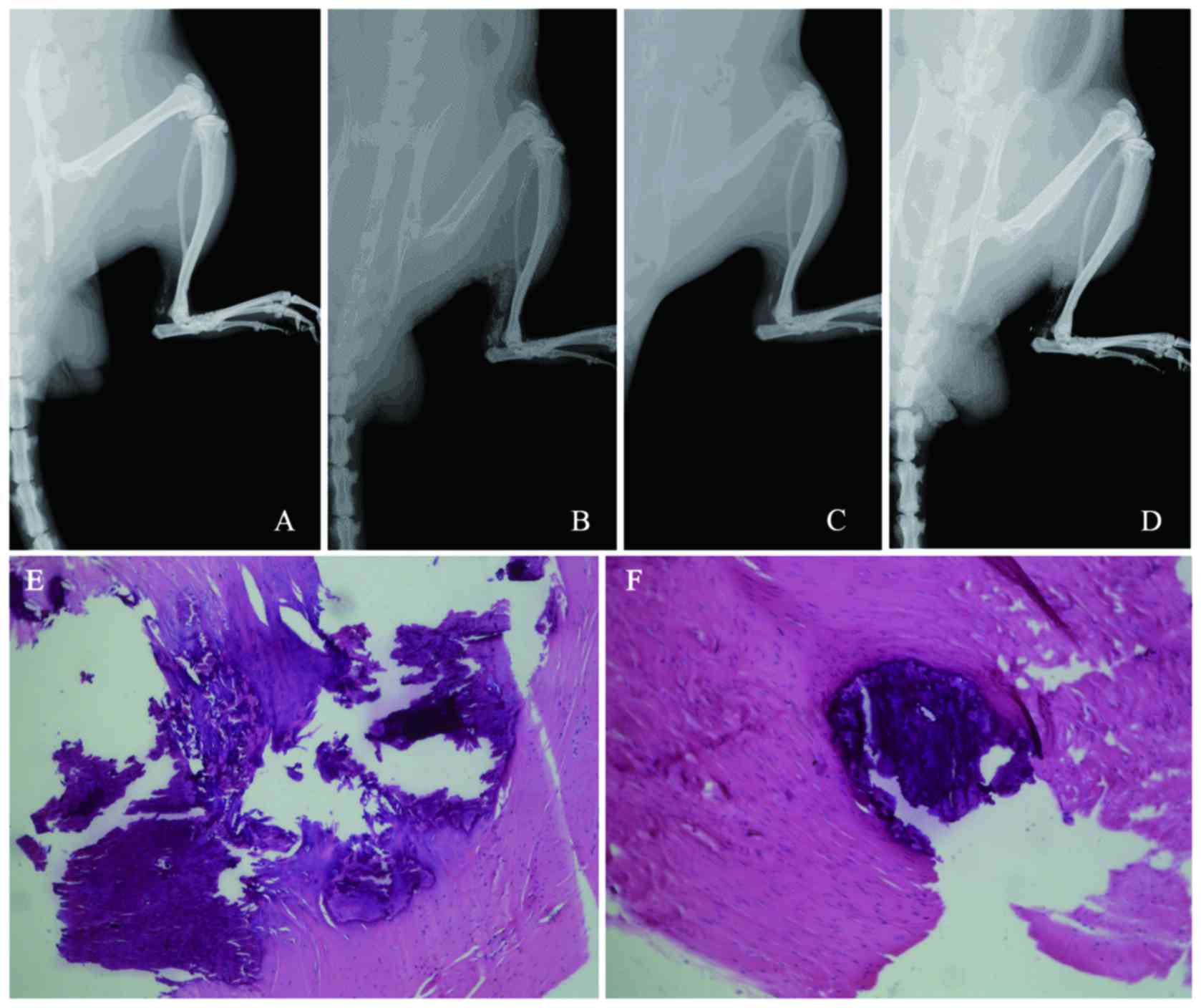|
1
|
Chen HC, Yang JY, Chuang SS, Huang CY and
Yang SY: Heterotopic ossification in burns: Our experience and
literature reviews. Burns. 35:857–862. 2009. View Article : Google Scholar : PubMed/NCBI
|
|
2
|
Reznik JE, Biros E, Marshall R, Jelbart M,
Milanese S, Gordon S and Galea MP: Prevalence and risk-factors of
neurogenic heterotopic ossification in traumatic spinal cord and
traumatic brain injured patients admitted to specialised units in
Australia. J Musculoskelet Neuronal Interact. 14:19–28.
2014.PubMed/NCBI
|
|
3
|
Naraghi FF, DeCoster TA, Moneim MS, Miller
RA and Rivero D: Heterotopic ossification. Orthopedics. 19:145–151.
1996.PubMed/NCBI
|
|
4
|
Evans EB: Heterotopic bone formation in
thermal burns. Clin Orthop Relat Res. 94–101. 1991.PubMed/NCBI
|
|
5
|
Rodenberg E, Azhdarinia A, Lazard ZW, Hall
M, Kwon SK, Wilganowski N, Salisbury EA, Merched-Sauvage M,
Olmsted-Davis EA, Sevick-Muraca EM and Davis AR: Matrix
metalloproteinase-9 is a diagnostic marker of heterotopic
ossification in a murine model. Tissue Eng Part A. 17:2487–2496.
2011. View Article : Google Scholar : PubMed/NCBI
|
|
6
|
Oliveira CO, Ikuta N and Regner A: Outcome
biomarkers following severe traumatic brain injury. Rev Bras Ter
Intensiva. 20:411–421. 2008.PubMed/NCBI
|
|
7
|
Feeney DM, Boyeson MG, Linn RT, Murray HM
and Dail WG: Responses to cortical injury: I. Methodology and local
effects of contusions in the rat. Brain Res. 211:67–77. 1981.
View Article : Google Scholar : PubMed/NCBI
|
|
8
|
Nolan T, Hands RE and Bustin SA:
Quantification of mRNA using real-time RT-PCR. Nat Protoc.
1:1559–1582. 2006. View Article : Google Scholar : PubMed/NCBI
|
|
9
|
Livak KJ and Schmittgen TD: Analysis of
relative gene expression data using real-time quantitative PCR and
the 2(−Delta Delta C(T)). Methods. 25:402–408. 2001. View Article : Google Scholar : PubMed/NCBI
|
|
10
|
Lomnitski L, Kohen R, Chen Y, Shohami E,
Trembovler V, Vogel T and Michaelson DM: Reduced levels of
antioxidants in brains of apolipoprotein E-deficient mice following
closed head injury. Pharmacol Biochem Behav. 56:669–673. 1997.
View Article : Google Scholar : PubMed/NCBI
|
|
11
|
Lin L, Shen Q, Xue T, Duan X, Fu X and Yu
C: Sonic hedgehog improves redifferentiation of dedifferentiated
chondrocytes for articular cartilage repair. PloS One.
9:e885502014. View Article : Google Scholar : PubMed/NCBI
|
|
12
|
Xu JC, Wu T, Wu GH, Zhong ZM, Tang YZ and
Chen JT: Leptin expression by heterotopic ossification-isolated
tissue in rats with Achilles' tenotomy. Saudi Med J. 30:605–610.
2009.PubMed/NCBI
|
|
13
|
Hong CC and Yu PB: Applications of small
molecule BMP inhibitors in physiology and disease. Cytokine Growth
Factor Rev. 20:409–418. 2009. View Article : Google Scholar : PubMed/NCBI
|
|
14
|
Gupta K, Shukla M, Cowland JB, Malemud CJ
and Haqqi TM: Neutrophil gelatinase-associated lipocalin is
expressed in osteoarthritis and forms a complex with matrix
metalloproteinase 9. Arthritis Rheum. 56:3326–3335. 2007.
View Article : Google Scholar : PubMed/NCBI
|
|
15
|
Hill PA, Murphy G, Docherty AJ, Hembry RM,
Millican TA, Reynolds JJ and Meikle MC: The effects of selective
inhibitors of matrix metalloproteinases (MMPs) on bone resorption
and the identification of MMPs and TIMP-1 in isolated osteoclasts.
J Cell Sci. 107:3055–3064. 1994.PubMed/NCBI
|
|
16
|
Baker AH, Zaltsman AB, George SJ and Newby
AC: Divergent effects of tissue inhibitor of metalloproteinase-1,
−2, or −3 overexpression on rat vascular smooth muscle cell
invasion, proliferation and death in vitro. TIMP-3 promotes
apoptosis. J Clin Invest. 101:1478–1487. 1998. View Article : Google Scholar : PubMed/NCBI
|
|
17
|
Böhmer AE, Oses JP, Schmidt AP, Perón CS,
Krebs CL, Oppitz PP, D'Avila TT, Souza DO, Portela LV and Stefani
MA: Neuron-specific enolase, S100B and glial fibrillary acidic
protein levels as outcome predictors in patients with severe
traumatic brain injury. Neurosurgery. 68:1624–1631. 2011.
View Article : Google Scholar : PubMed/NCBI
|
|
18
|
Dimopoulou I, Korfias S, Dafni U, Anthi A,
Psachoulia C, Jullien G, Sakas DE and Roussos C: Protein S-100b
serum levels in trauma-induced brain death. Neurology. 60:947–951.
2003. View Article : Google Scholar : PubMed/NCBI
|
|
19
|
Wang X, Mori T, Jung JC, Fini ME and Lo
EH: Secretion of matrix metalloproteinase-2 and −9 after mechanical
trauma injury in rat cortical cultures and involvement of MAP
kinase. J Neurotrauma. 19:615–625. 2002. View Article : Google Scholar : PubMed/NCBI
|
|
20
|
Caron A, Desrosiers RR, Langlois S and
Béliveau R: Ischemia-reperfusion injury stimulates gelatinase
expression and activity in kidney glomeruli. Can J Physiol
Pharmacol. 83:287–300. 2005. View
Article : Google Scholar : PubMed/NCBI
|
|
21
|
Nagase H, Visse R and Murphy G: Structure
and function of matrix metalloproteinases and TIMPs. Cardiovasc
Res. 69:562–573. 2006. View Article : Google Scholar : PubMed/NCBI
|
|
22
|
Sternlicht MD and Werb Z: How matrix
metalloproteinases regulate cell behavior. Annu Rev Cell Dev Biol.
17:463–516. 2001. View Article : Google Scholar : PubMed/NCBI
|
|
23
|
Hess K, Ushmorov A, Fiedler J, Brenner RE
and Wirth T: TNFalpha promotes osteogenic differentiation of human
mesenchymal stem cells by triggering the NF-kappaB signaling
pathway. Bone. 45:367–376. 2009. View Article : Google Scholar : PubMed/NCBI
|
|
24
|
Ortega N, Wang K, Ferrara N, Werb Z and Vu
TH: Complementary interplay between matrix metalloproteinase-9,
vascular endothelial growth factor and osteoclast function drives
endochondral bone formation. Dis Model Mech. 3:224–235. 2010.
View Article : Google Scholar : PubMed/NCBI
|
|
25
|
Kaplan FS, Glaser DL, Hebela N and Shore
EM: Heterotopic ossification. J Am Acad Orthop Surg. 12:116–125.
2004. View Article : Google Scholar : PubMed/NCBI
|
|
26
|
Chakraborti S, Mandal M, Das S, Mandal A
and Chakraborti T: Regulation of matrix metalloproteinases: An
overview. Mol Cell Biochem. 253:269–285. 2003. View Article : Google Scholar : PubMed/NCBI
|
|
27
|
Li DQ, Lokeshwar BL, Solomon A, Monroy D,
Ji Z and Pflugfelder SC: Regulation of MMP-9 production by human
corneal epithelial cells. Exp Eye Res. 73:449–459. 2001. View Article : Google Scholar : PubMed/NCBI
|



